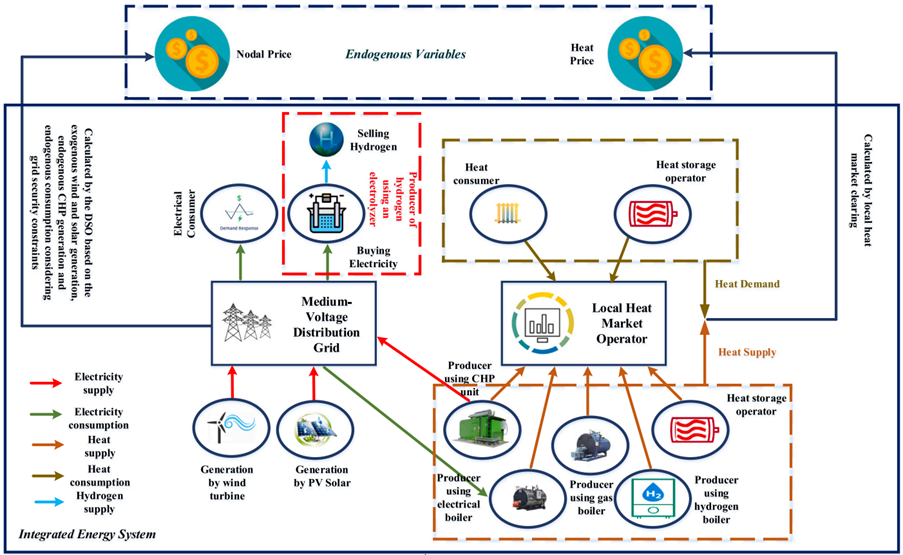The recent strong increase in the penetration of renewable energy sources (RESs) in medium-voltage distribution grids (MVDNs) has raised the need for congestion management in such grids, as they were not designed for this new condition. This paper examines to what extent producing green hydrogen through electrolyzers can profitably contribute to congestion alleviation in MVDNs in the presence of high amounts of RES, as well as flexible consumers of electricity and a local heat system. To address this issue, an incentive-based method for improving flexibility in MVDNs is used which is based on a single-leader–multiple-followers game formulated by bi-level mathematical programming. At the upper level, the distribution system operator, who is the leader of this game, determines dynamic prices as incentives at each node based on the levels of generation and load.

Next, at the lower level, providers of flexibility, including producers using electrolyzers, price-responsive power consumers, heat consumers, as well as heat producers, respond to these incentives by reshaping their output and consumption patterns. The model is applied to a region in the North of The Netherlands. The obtained results demonstrate that converting power to hydrogen can be an economically efficient way to reduce congestion in MVDNs when there is a high amount of RES. However, the economic value of electrolyzers as providers of flexibility to MVDNs decreases when more other options for flexibility provision exist.

